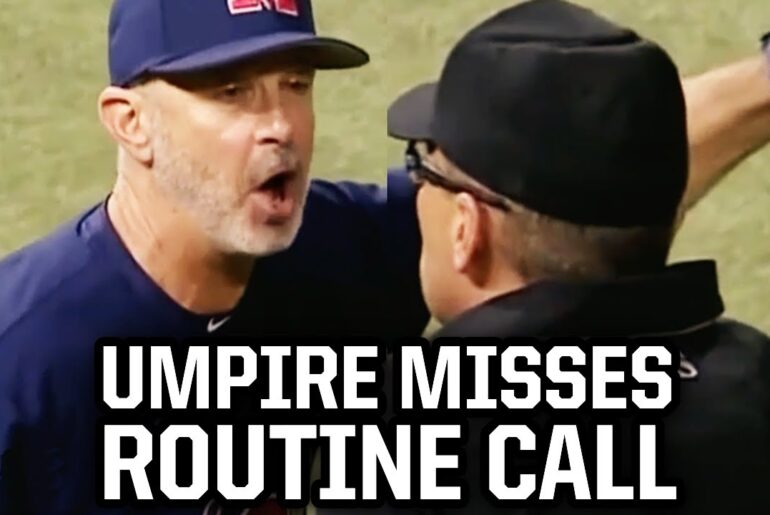Tensions ran high as a dispute erupted between the manager and the umpire regarding the management of the game clock. This incident sheds light on the importance of effective clock management in maintaining the pace of the game. Let’s delve into the details of the confrontation and analyze the key events that unfolded.
The Initial Conflict
The disagreement between the manager and the umpire arose when the manager expressed his dissatisfaction with how the game clock was being handled. It’s worth noting that this issue had been previously discussed by the manager with Major League Baseball (MLB) officials. However, the matter remained unresolved, leading to further tension on the field.
A Fiery Exchange
As tensions escalated, both parties engaged in a heated exchange of words. The manager, with his mask removed, directed his frustration towards the umpire, vehemently expressing his dissatisfaction. The confrontation was captured by hot microphones, allowing us to gain insight into the intense nature of the argument.
Unraveling the Verbal Exchange
During the altercation, the manager vehemently questioned why the game clock kept stopping. He demanded an explanation from the umpire, who responded with a dismissive attitude. The exchange grew more confrontational as both parties continued to trade verbal blows. It became evident that the manager was seeking clarity on the clock management issue, while the umpire failed to provide a satisfactory response.
Confrontation and Ejection
As tensions reached a boiling point, the umpire ejected the manager from the game before the next pitch was even thrown. This hasty decision only added fuel to the already intense situation. The manager’s ejection highlighted the deep-rooted frustration surrounding the clock management dispute.
Revisiting the Issue
Following the incident, the umpire crew chief intervened, attempting to defuse the situation. However, the manager persisted in questioning the consistency of clock management throughout the season. He expressed his belief that the crew’s handling of the clock deviated from the overall trend observed in previous games. The manager had already voiced these concerns to MLB officials earlier, emphasizing the need for consistent clock management.
Another Run-In with the Same Crew
Curiously, the next game involving the same umpire crew also witnessed a contentious interaction. This time, a pitcher was asked to remove his wedding ring, leading to further dissatisfaction. The pitcher complied, swapping his metal wedding ring for a rubber one, albeit with a sense of sarcasm. This incident suggests a pattern of tense encounters involving the crew, potentially indicating a need for closer scrutiny of their officiating decisions.
Conclusion
The confrontation between the manager and the umpire sheds light on the significance of clock management in baseball. It emphasizes the need for consistent enforcement and clear communication between managers, umpires, and MLB officials. The incident serves as a reminder of the challenges faced in maintaining the integrity and pace of the game. As the baseball season progresses, it is crucial for all parties involved to address these concerns and strive for improved transparency and understanding.



